
Roots
The whisper of the Nile, a timeless current, carried more than just life-giving waters through ancient Nubia; it also cradled a profound understanding of self, deeply etched into the very fibers of existence. For the Nubian people, who thrived in the sun-drenched lands south of Egypt, hair was never merely a covering for the head. It served as a living chronicle, a declaration of identity, status, and spirit.
As we look back through the dust of millennia, guided by archaeological findings and artistic depictions, we find a society that approached hair with reverence, creativity, and an innate wisdom that resonates even today. This initial exploration lays the groundwork, inviting us to consider the foundational role hair played in Nubian life, much like the enduring granite of their temples.
The ancient Nubians, a collection of cultures and kingdoms such as Kerma, Napata, and Meroe, cultivated a civilization distinct yet often interconnected with their northern Egyptian neighbors. Their geographical position, straddling the fertile banks of the Nile in what is now Sudan, gifted them with unique resources and a vibrant cultural exchange. Unlike some historical accounts that might simplify their presence, Nubians were powerful, with their own kings and queens, their own architectural marvels, and their own distinctive artistic expressions. Hair, in this rich context, was a canvas for communication, a visible language understood by all.
For ancient Nubians, hair transcended mere aesthetics, serving as a powerful visual language of identity, status, and spiritual connection.

Who Were the Nubians
To truly appreciate the artistry of Nubian hair, one must first recognize the people themselves. Ancient Nubia encompassed a vast region, stretching from Aswan in modern-day Egypt southward into Sudan. This land, often referred to as Kush, was home to diverse groups who shared a common heritage along the Nile. Their history is long and complex, marked by periods of independence, influence over Egypt, and times of cultural exchange.
Archaeological evidence, from pottery to temple carvings, consistently portrays Nubians with a range of physical characteristics, including dark skin tones and various textured hair types, from tightly coiled to wavy. This representation counters any simplistic notions of a monolithic appearance.
The Nubians were not a singular, unchanging entity; their societies evolved over thousands of years, from the Kingdom of Kerma (circa 2500-1500 BCE) to the Napatan (circa 1000-300 BCE) and Meroitic (circa 300 BCE-300 CE) periods. Across these eras, a consistent thread was the importance of personal adornment, with hair playing a central role. Their art, while sometimes showing Egyptian influence, consistently highlighted traditional Nubian hairstyles and clothing, underscoring their unique cultural identity.
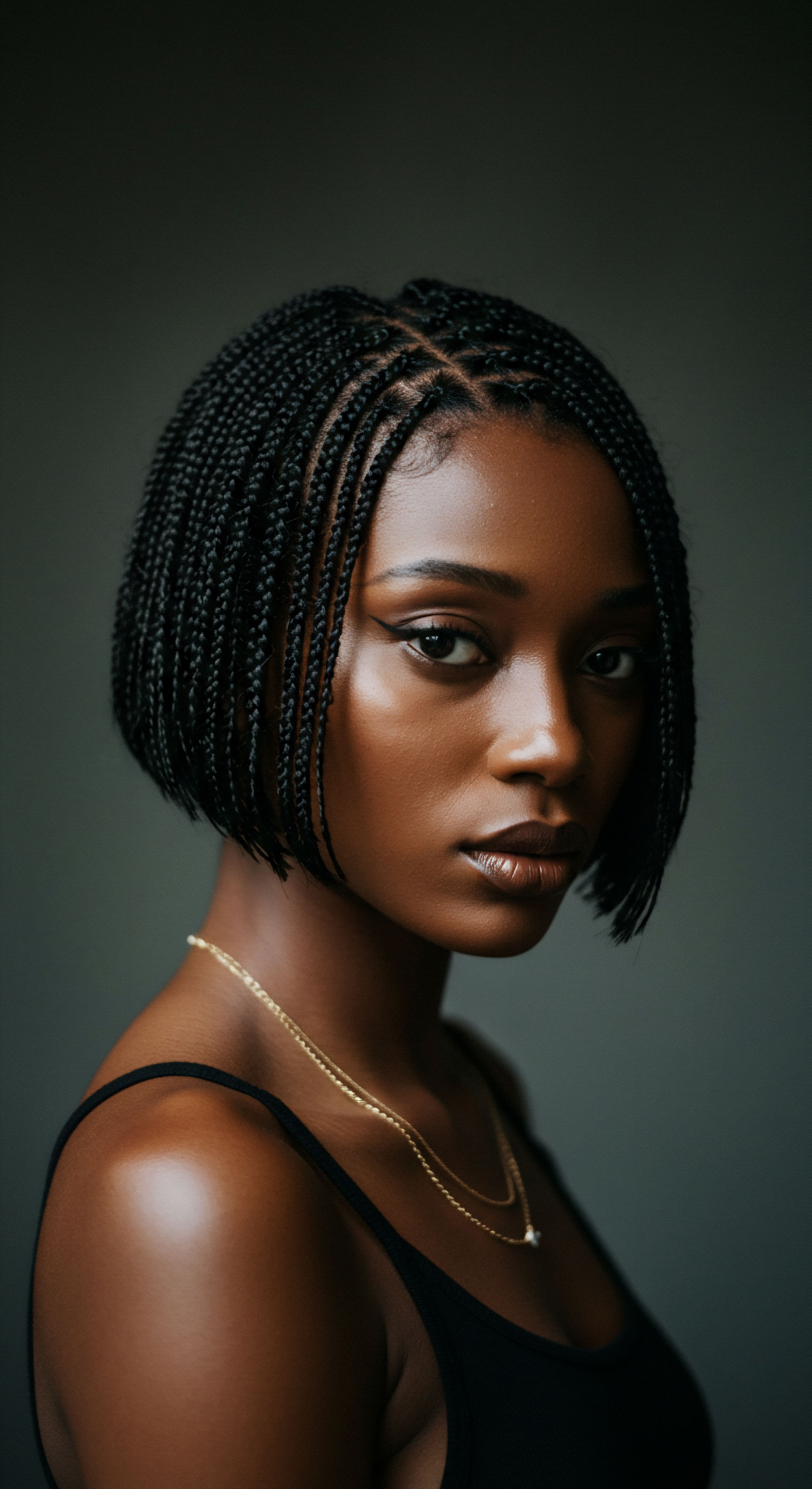
Hair as a Cultural Marker
In ancient Nubian society, hair carried immense social and symbolic weight. It was a marker of age, social status, marital standing, and even tribal affiliation. A hairstyle could communicate a person’s role within the community without a single word being spoken.
This societal emphasis on hair meant that its care and styling were not casual acts but deliberate, culturally significant practices. For instance, specific styles could indicate a woman’s marital status or her rank within a community.
The meticulous attention given to hair also suggested a connection to a person’s vitality and overall well-being. Maintaining long, healthy hair was a sign of prosperity and strength. The time and effort invested in cultivating and styling hair before important ceremonies, celebrations, or even as preparation for conflict, underscored its celebrated position within their traditions.
- Social Status ❉ Hair often conveyed one’s standing within the community.
- Age ❉ Different styles marked transitions from childhood to adulthood and beyond.
- Identity ❉ Specific styles could signal tribal affiliation or family lineage.

The Nile’s Influence on Hair Care
The river Nile, the lifeblood of Nubia, played an undeniable role in shaping daily life, including personal grooming practices. The hot, arid climate of the region necessitated methods of hair care that protected and maintained scalp health. While direct textual evidence detailing specific Nubian hair care recipes is less abundant than for ancient Egypt, archaeological finds and comparative studies offer valuable insights.
The availability of natural resources along the Nile likely influenced the ingredients used. Oils, such as castor or almond, commonly employed in ancient Egypt for moisturizing and promoting hair growth, would have been accessible in Nubia as well. These oils would have been essential for protecting hair from the harsh sun and preventing dryness.
Combs, often made from wood, bone, or ivory, have been discovered at various archaeological sites in both Nubia and Egypt, suggesting their widespread use for detangling and styling. These tools were not just utilitarian; many were beautifully carved, reflecting the value placed on hair adornment.
| Material Plant Oils (e.g. Castor, Almond) |
| Likely Use Moisturizing, scalp health, shine |
| Source Region Nile Valley, local cultivation |
| Material Animal Fats/Resins |
| Likely Use Styling hold, conditioning |
| Source Region Local fauna |
| Material Henna |
| Likely Use Hair coloring, conditioning |
| Source Region Regional plants |
| Material Clays |
| Likely Use Cleansing, scalp treatment |
| Source Region Nile River banks |
| Material These materials, derived from the natural environment, formed the foundation of ancient hair care practices. |

Ritual
Stepping beyond the foundational understanding of hair’s significance, we approach the realm of ritual—the daily, weekly, and ceremonial practices that shaped Nubian hair. Here, the practical wisdom of textured hair care comes into focus, revealing techniques passed down through generations. It is in these deliberate acts of grooming and adornment that the Nubian spirit of care and aesthetic precision truly comes alive.
We consider not just the end result, but the patient hands, the communal gatherings, and the tools that transformed natural hair into expressions of profound meaning. This section invites a contemplation of the tangible methods and meticulous artistry involved in their hair styling.
The archaeological record, alongside artistic depictions on tomb walls and statues, provides a window into the diverse and sophisticated hairstyles worn by ancient Nubians. These images often depict individuals with tightly coiled braids, elaborate headpieces, and adornments that speak volumes about their daily routines and special occasions. The techniques employed were tailored to the natural texture of their hair, highlighting an understanding of its unique properties.
Nubian hair styling was a meticulous ritual, transforming natural textures into artistic and communicative expressions.

What Styling Techniques Did Nubians Employ?
Nubian hair styling involved a range of techniques, many of which are recognizable in textured hair traditions today. Braiding and coiling appear to have been central to their aesthetic. Evidence from temple carvings and relief sculptures shows figures with distinctive braided and cornrow styles.
These were not simply decorative; they often carried specific cultural meanings. The presence of tightly bound rows and intricate patterns points to a mastery of techniques that provided both beauty and practicality, protecting the hair in the arid climate.
One particularly notable style, often referred to as “Nubian knots,” is a testament to their skill. These knots, a form of coiled or twisted hair, could have been worn by both men and women, signifying their cultural aesthetic. While often associated with modern natural hair movements, the historical roots of such styles are deep, extending back to ancient African civilizations. The creation of these styles would have required patience and dexterity, perhaps even involving communal grooming sessions where knowledge and techniques were shared.
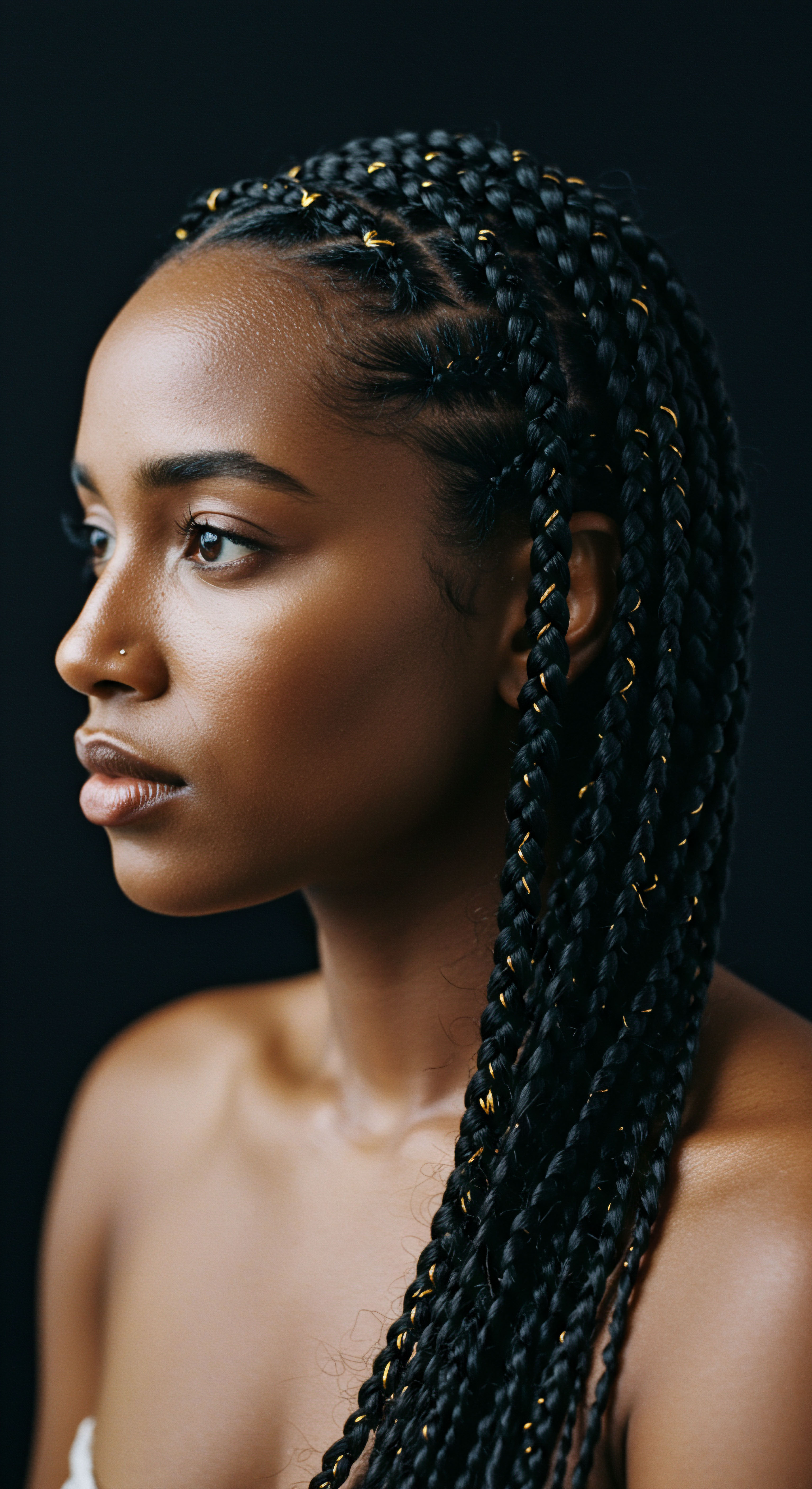
Did Ancient Nubians Use Hair Extensions or Wigs?
The use of hair extensions and wigs was a practice shared by both ancient Nubians and Egyptians, though with distinct expressions. Ancient Egyptians, particularly the elite, frequently wore elaborate wigs made from human hair, wool, or plant fibers, often intricately braided and adorned. These wigs were symbols of wealth, status, and even religious devotion.
Interestingly, a specific style known as the “Nubian wig” gained popularity in Egypt during the Amarna period (circa 1349–1336 BCE). This style, characterized by its short, bushy appearance with rows of curls framing the face and exposing the nape of the neck, was thought to mimic the natural, short, curly hair worn by Nubian people. This suggests a cross-cultural appreciation for Nubian hair aesthetics, with Egyptians adopting elements of Nubian style.
While the use of full wigs might have been more prevalent among the elite due to their cost and the craftsmanship required, hair extensions, integrated into natural hair, would have been a more accessible way for many to achieve desired lengths or volumes. Archaeological findings from Amarna, for example, have uncovered remains with well-preserved elaborate hairstyles featuring more than 70 hair extensions, suggesting such practices were common, possibly even for burial.
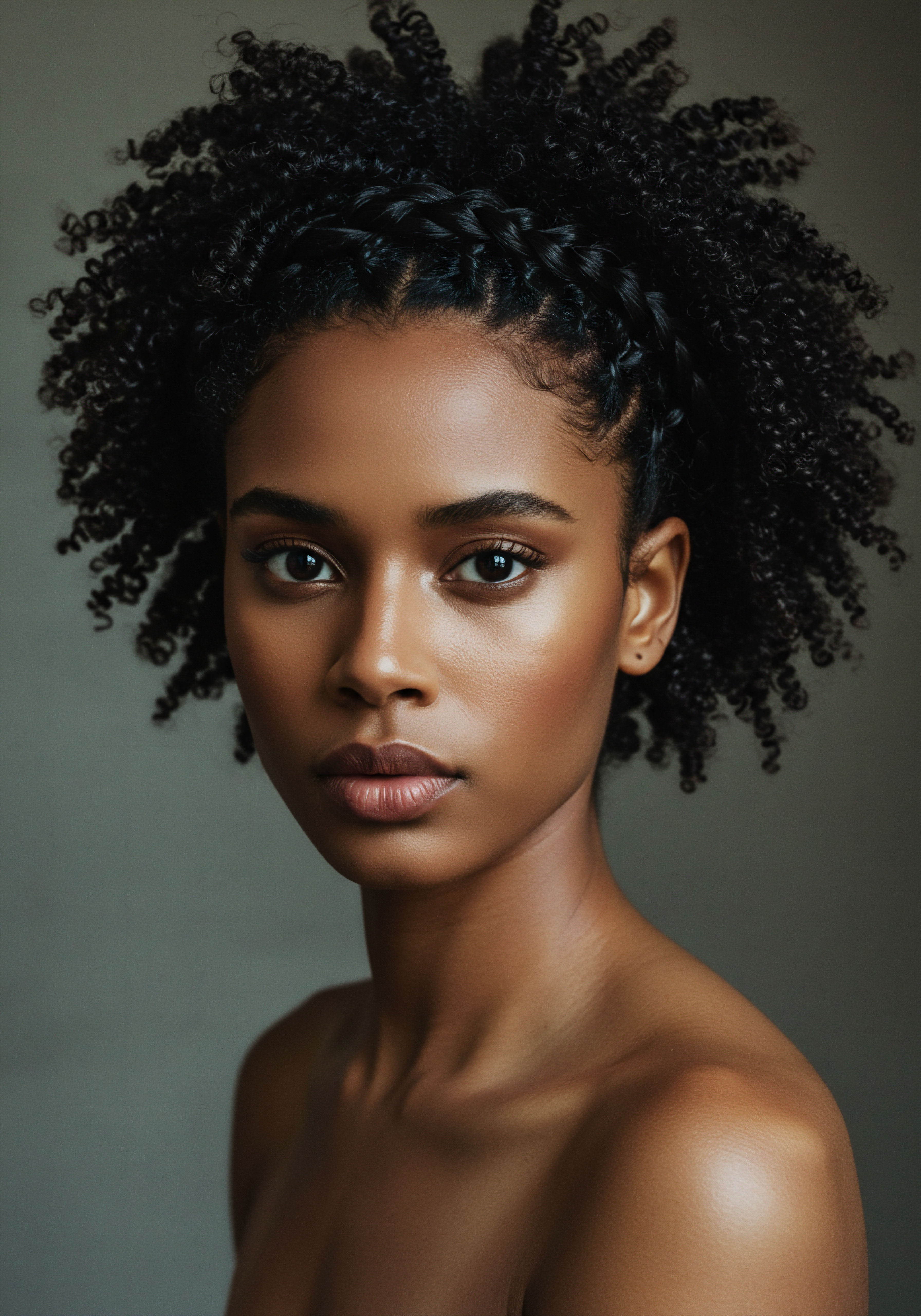
Tools and Adornments for Nubian Hair
The tools and adornments used by ancient Nubians for their hair were as significant as the styles themselves. Combs, crafted from materials like wood, bone, and ivory, were essential for detangling and shaping hair. These implements were often found buried with their owners, underscoring the sacred nature of both hair and its grooming tools. Some combs were not merely functional but were also carved with intricate designs, transforming them into pieces of art.
Adornments played a significant role in enhancing hairstyles and conveying messages. Nubians adorned their hair with a variety of materials, including:
- Jewels ❉ Gold, semi-precious stones, and beads were incorporated into hairstyles, reflecting wealth and social standing.
- Feathers ❉ Indicating status or connection to certain animals or spiritual beliefs.
- Metals ❉ Gold rings or other metallic elements were sometimes used to decorate braids or coils.
- Cowrie Shells ❉ These shells, often associated with fertility and prosperity, were also used as hair embellishments.
These adornments were not simply decorative additions; they were integral to the hairstyle’s meaning and its visual impact. The selection and arrangement of these items would have been a deliberate act, contributing to the overall cultural narrative expressed through hair.
| Adornment Type Beads |
| Materials Used Glass, stone, gold, faience |
| Cultural Significance Wealth, social status, aesthetic appeal |
| Adornment Type Metal Rings/Coils |
| Materials Used Gold, copper |
| Cultural Significance Prestige, decorative enhancement |
| Adornment Type Shells |
| Materials Used Cowrie shells |
| Cultural Significance Fertility, prosperity, spiritual connection |
| Adornment Type Feathers |
| Materials Used Bird feathers |
| Cultural Significance Status, tribal identity, ceremonial use |
| Adornment Type These adornments transformed hairstyles into dynamic statements of identity and belief. |

Relay
Moving into a more profound understanding, we find that ancient Nubian hair styling was a powerful relay of information, a complex language spoken through coils, braids, and adornments. This section transcends the mere techniques, inviting us to consider the deeper cultural currents, the societal structures, and the spiritual convictions that shaped every strand. It is here that the interplay of biological characteristics, social aspirations, and cultural beliefs becomes most apparent, revealing a civilization where hair was not just seen but understood, read, and revered. We will explore the subtle yet potent ways hair communicated across the Nubian landscape, drawing on the latest research to illuminate these connections.
The relationship between hair and identity in Nubia was deeply embedded in their worldview. Far from a superficial concern, hair practices were intertwined with rites of passage, communal bonds, and expressions of individual and collective being. The nuances of their hair culture speak to a sophisticated society that recognized the inherent power of appearance as a form of non-verbal communication.
Nubian hair practices served as a complex system of communication, conveying identity, social standing, and spiritual beliefs.
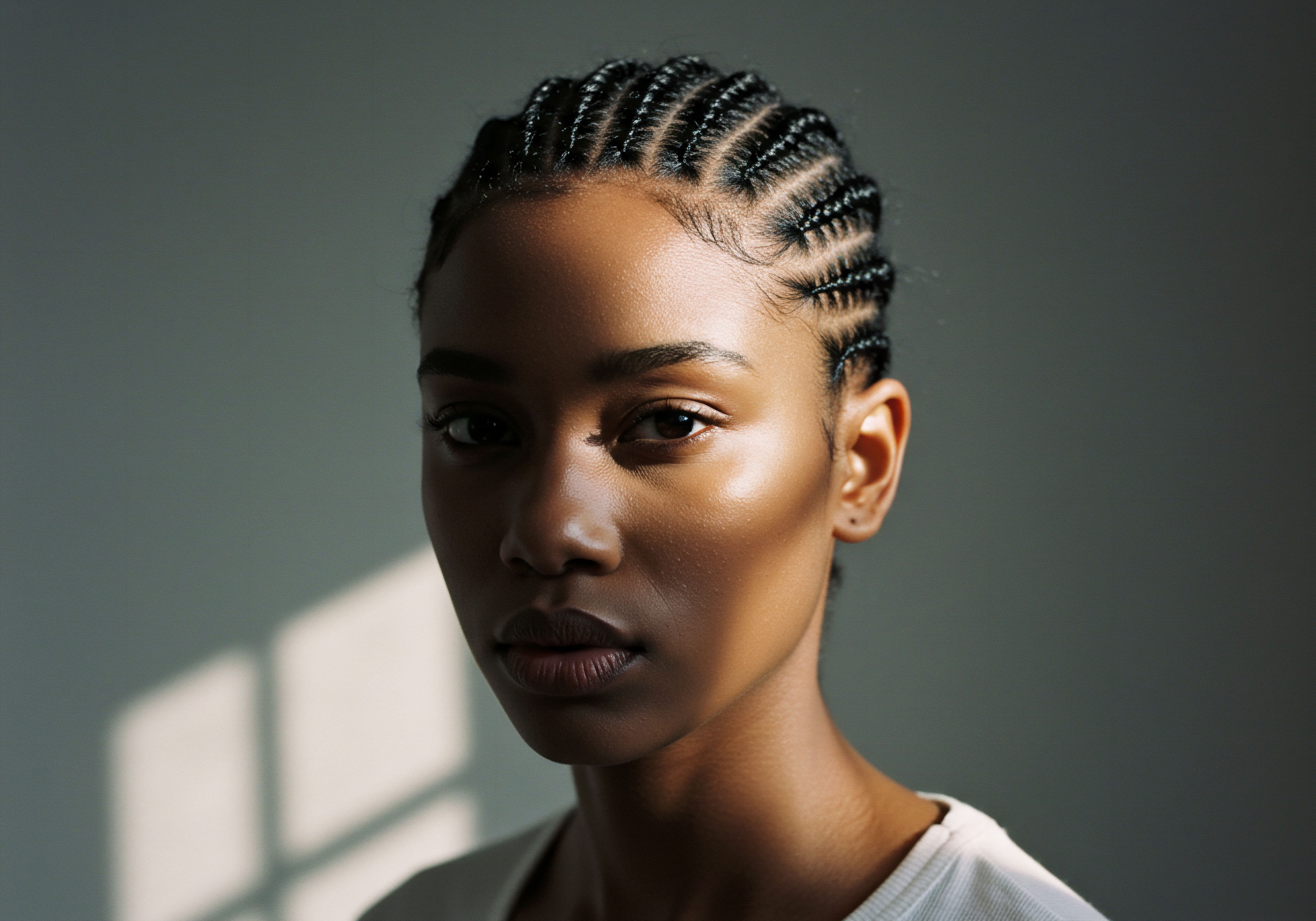
How Did Hair Reflect Social Standing in Nubia?
The elaborate nature of Nubian hairstyles often corresponded directly to an individual’s social standing. The time, resources, and skill required to create and maintain certain styles meant that they were often exclusive to the elite. Royal figures, particularly the powerful queens known as Kandakes, were depicted with hairstyles that symbolized their authority and lineage. These grand coiffures, often adorned with precious materials, served as visual cues of their elevated position within the hierarchy.
For the broader population, variations in styling could indicate different social strata. While the elite might have worn more intricate braided wigs or natural styles augmented with extensive adornments, other groups would have adopted simpler, yet still culturally significant, expressions. This visual hierarchy allowed for instant recognition of a person’s place within the community, reinforcing social order and cultural norms.

What Spiritual Connections Did Hair Hold for Nubians?
Beyond social indicators, hair held profound spiritual significance for ancient Nubians. Across many African cultures, hair is considered sacred, a conduit of spiritual energy that connects individuals to their ancestors and deities. This reverence for hair likely extended to Nubian beliefs, where grooming rituals might have been imbued with spiritual purpose, perhaps to invoke blessings or offer protection.
The practice of adorning hair with amulets and charms, common in ancient Egypt and likely influencing Nubia, suggests a belief in their ability to guard against malevolent forces. This intertwining of personal adornment with spiritual protection highlights a worldview where the physical and the metaphysical were closely linked, and hair served as a visible extension of one’s spirituality.
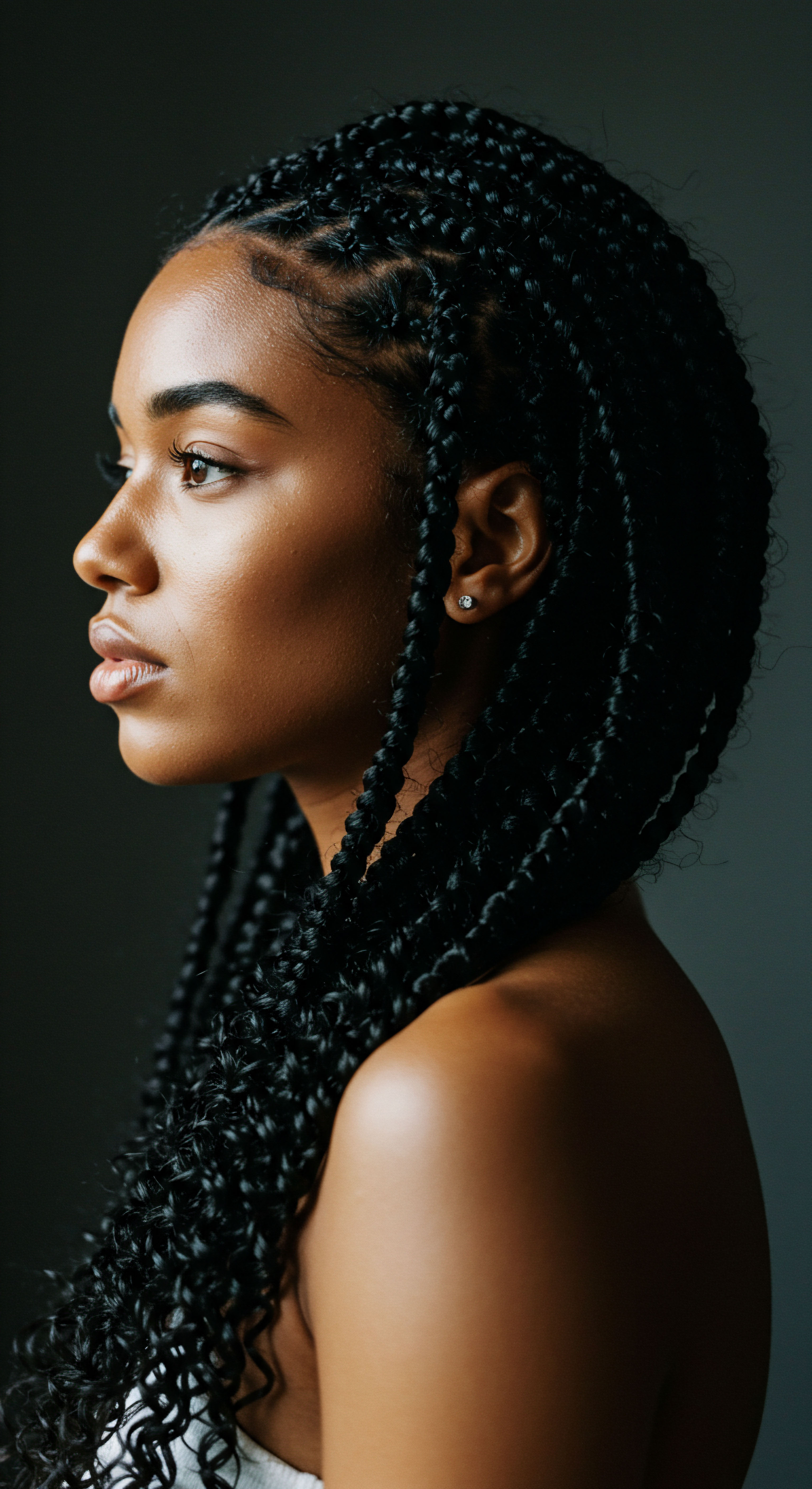
A Unique Data Point on Nubian Hair ❉ Pigmentation and Population Studies
While artistic depictions offer a rich visual record, scientific analysis of archaeological remains provides compelling, sometimes unexpected, insights into ancient Nubian hair. A fascinating study on hair samples from 76 burials at Semna South in Sudanese Nubia, conducted by Daniel Hrdy, revealed an intriguing detail ❉ the pigmentation of some of these ancient Nubian hairs was lighter than what might be expected based on contemporary populations in the region. Using techniques like electrophoresis and fluorescence microscopy, Hrdy found a higher proportion of lighter samples, even accounting for melanin oxidation over time.
This particular finding challenges simplistic assumptions about uniform hair color within ancient populations and prompts deeper consideration of genetic diversity, migration patterns, and the potential for mixed populations in the Nile Valley. While modern Nubians are generally depicted as having darker skin, historical and archaeological evidence, including this hair analysis, suggests a broader spectrum of physical characteristics among ancient Nubian groups. The study further noted that the hair form showed characteristics intermediate between European and African samples in terms of curling variables, with some X-group individuals, especially males, exhibiting more African elements.
This scientific examination of ancient hair provides a tangible, empirical layer to our understanding of Nubian identity, underscoring the complexities of human populations and their appearance over millennia. It reminds us that historical appearances are rarely as straightforward as modern categorizations might suggest, pushing us to consider a more nuanced human story.

The Legacy of Nubian Hair Practices
The influence of Nubian hair practices extends beyond their historical context, resonating with contemporary textured hair traditions. Many styles popular today, such as various forms of braids and knots, bear a striking resemblance to those depicted in ancient Nubian art. This enduring connection speaks to a deep cultural memory and the continuous lineage of African hair artistry. The resilience of these practices, surviving centuries and even forced cultural shifts, underscores their profound significance.
The emphasis on natural hair textures, the use of protective styles, and the integration of adornments seen in ancient Nubia continue to find expression in modern Black hair culture. The historical context of Nubian hair provides a powerful foundation for understanding the cultural pride and identity associated with textured hair today. It highlights a heritage of beauty, ingenuity, and cultural preservation that continues to inspire and inform.

Reflection
As we close this contemplation of ancient Nubian hair, a quiet appreciation settles. The strands of history, once seemingly distant, now feel intimately connected to the present. We have seen how hair, far from being a mere biological attribute, served as a vibrant language, a canvas for identity, and a profound connection to the spiritual and social worlds of the Nubian people.
Their meticulous care, their artistic expressions, and the deep meanings embedded in each braid and coil offer a gentle reminder ❉ beauty, in its most resonant form, is always intertwined with self-understanding and cultural heritage. The echoes of their practices continue to whisper through time, inviting us to recognize the enduring wisdom held within every textured curl.

References
- Adams, W. Y. (2011). Qasr Ibrim ❉ The Earlier Medieval Period. Egypt Exploration Society.
- Adams, W. Y. & Adams, N. K. (1998). Kulubnarti I ❉ The Cemeteries. University Press of Kentucky.
- Adams, W. Y. et al. (1999). Kulubnarti II ❉ The Architecture. University Press of Kentucky.
- Aufderheide, A. C. (2003). The Scientific Study of Mummies. Cambridge University Press.
- Hrdy, D. B. (1978). Analysis of hair samples of mummies from Semna South (Sudanese Nubia). American Journal of Physical Anthropology, 49(2), 277-282.
- Sandford, M. K. & Kissling, M. (1994). Multivariate analyses of elemental hair concentrations from a medieval Nubian population. American Journal of Physical Anthropology, 95(1), 1-13.
- Schwarcz, H. P. & White, C. D. (2004). Stable isotope analysis of soft tissues from mummified human remains. Archaeometry, 46(4), 589-605.
- Smith, S. T. (2004). Wretched Kush ❉ Ethnic Identities and Boundaries in Egypt’s New Kingdom Nubia. Routledge.
- Van Gerven, D. P. et al. (1981). The Kulubnarti Archaeological Project ❉ A Bioarchaeological Overview. Current Anthropology, 22(5), 556-557.
- White, C. D. (1993). The grasshopper or the ant? ❉ Cultigen-use strategies in ancient Nubia from C-13 analyses of human hair. Journal of Archaeological Science, 20(6), 657-666.